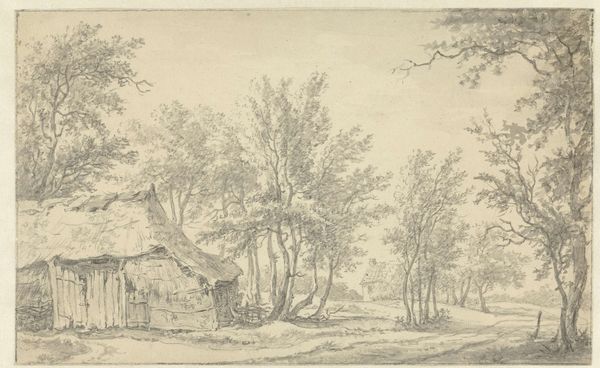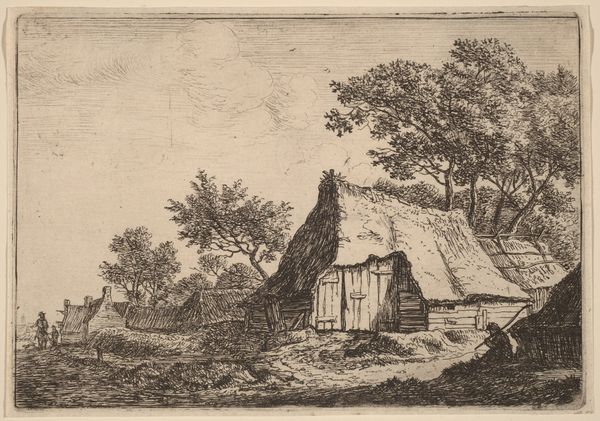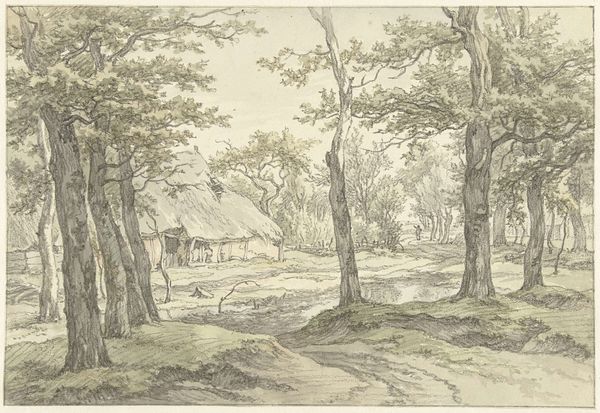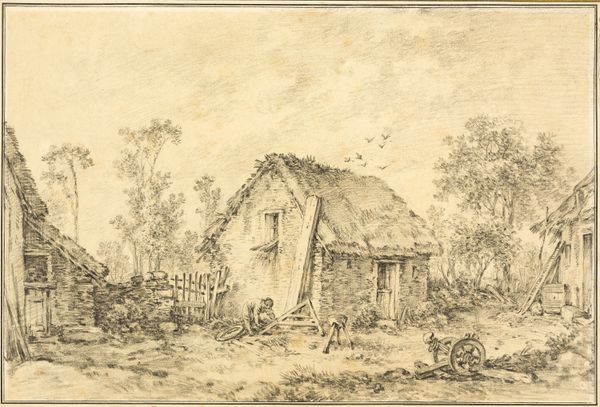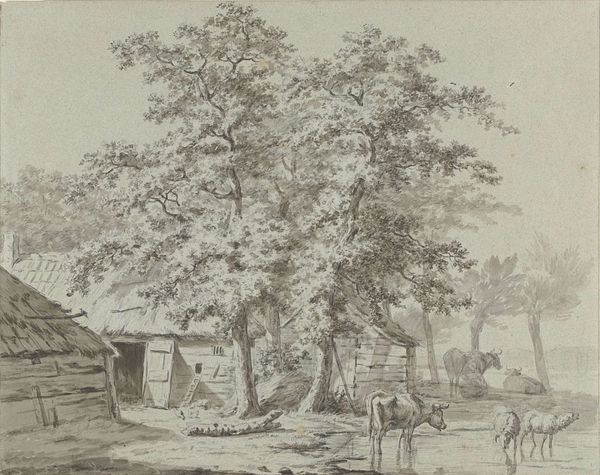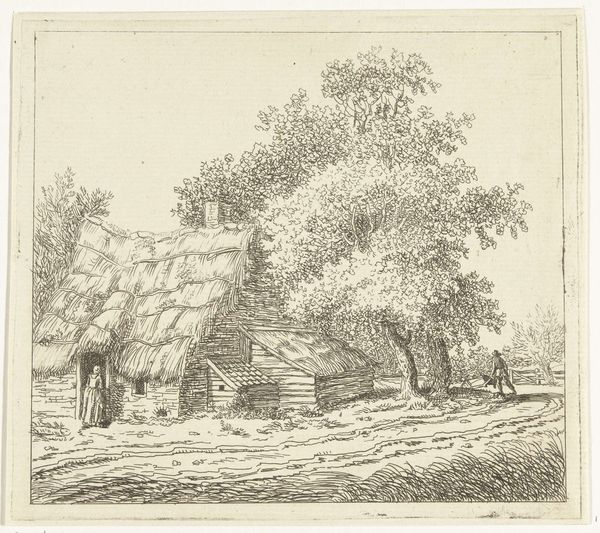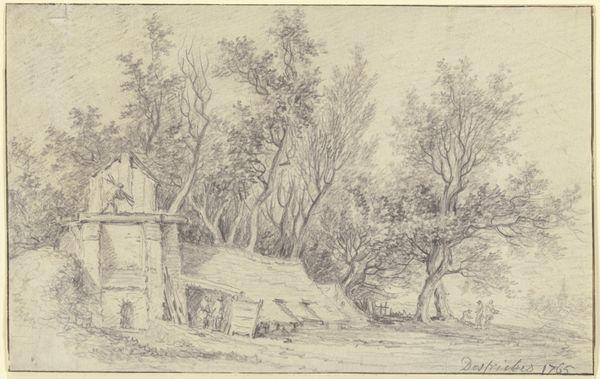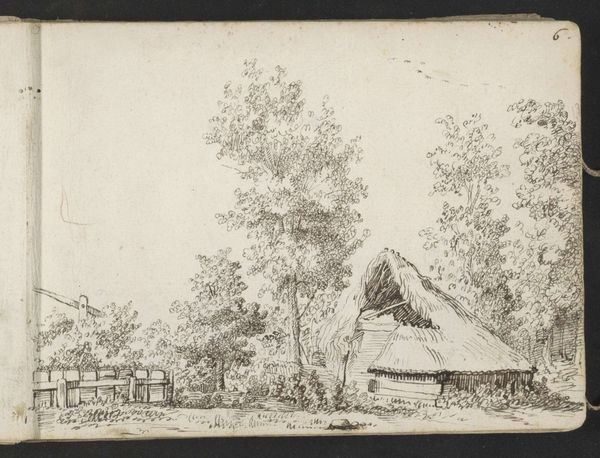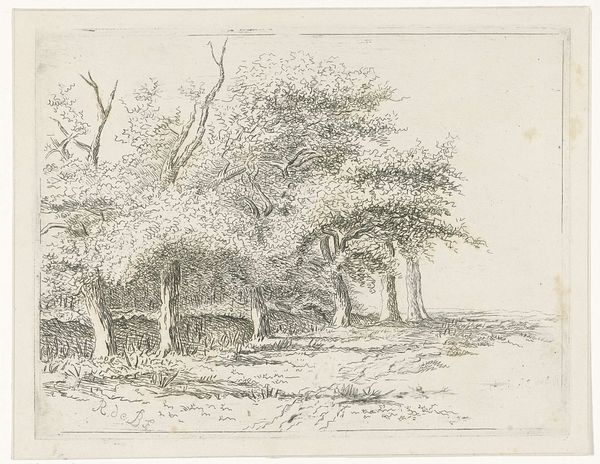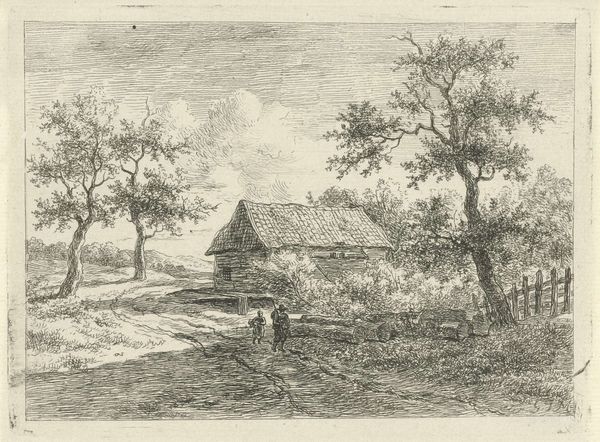
drawing, pencil
#
drawing
#
landscape
#
pencil
#
realism
Dimensions: height 184 mm, width 282 mm
Copyright: Rijks Museum: Open Domain
Editor: So, this is "Houten hut naast een bomengroep" – "Wooden Hut Next to a Group of Trees" – made in 1874 by Willem Cornelis Rip. It’s a pencil drawing, very delicate. It gives off this quiet, rural vibe. What do you see in this piece, looking at it from your perspective? Curator: What strikes me is the sheer labor involved in the depiction. Consider the pencils used, manufactured through an industrial process. This contrasts sharply with the handmade hut, a symbol of pre-industrial, agrarian life. The drawing itself, carefully rendered, translates the scene, commodifying the very idea of rural simplicity for consumption. Editor: That's a very interesting way to look at it! I was just seeing a simple landscape. Curator: Exactly! What materials went into that hut? Probably sourced locally. Who built it, and for what purpose? Was it a farmer's shelter, a storage space, or someone's actual home? Rip, by using commercially-produced pencils to depict this, draws attention to the changing relationship between the artist, the subject, and the viewer – the rise of the industrial impacting labor and rural settings. Editor: I hadn't thought of it that way. It’s like the drawing itself is a product of the forces transforming the world Rip was observing. Does the way he used the pencil have a specific effect then? Curator: Definitely. Notice the variations in line, the subtle shading? This wasn’t just about accurately portraying the hut. It was about demonstrating artistic skill, about turning observation into a desirable object – in essence, creating a luxury item portraying simple labour. Editor: So, by focusing on the materials and process, we're not just looking at a hut and trees, but a whole network of production, labor, and consumption being depicted? Curator: Precisely. It reveals the complex layers of meaning embedded within seemingly simple imagery. Editor: I’ll never look at a landscape drawing the same way again! Curator: Good! It's all about challenging the traditional ideas of what we consider "high" and "low" art.
Comments
No comments
Be the first to comment and join the conversation on the ultimate creative platform.
